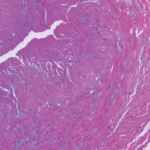In a recent study, investigators have attempted to predict disease at the individual patient level by adding the temporal dimension to the epidemiological data. Anders Boeck Jensen, PhD, postdoctoral fellow at the Center for Biological Sequence Analysis at the Technical University of Denmark in Lyngby, and colleagues published their analysis of epidemiological data in Nature Communications, June 24, 2014.1 The results suggest that gout is a key cardiovascular diagnosis that is linked to other cardiovascular diagnoses.
Denmark has collected a great deal of population-wide co-morbidity data over the past 15 years, and the investigators evaluated the Danish registry of 6.2 million patients for all diseases. They identified 1,171 significant diagnosis trajectories. They define the term diagnosis trajectory for their readers “as an ordered series of diagnoses where the diagnoses were observed in the patients in a specific order. The order had to be observed strictly for a patient to be considered following it. Thus, for a trajectory starting with the diagnoses D1 -> D2, patients who had the diagnoses assigned in the order D2 -> D1 -> D2 again were not considered as following the trajectory.” The authors emphasize the importance of the strict definition in their work and explain that the definition limits the variability that can be covered by a single trajectory.
They grouped their temporal disease trajectories around a few key diagnoses, including chronic obstructive pulmonary disease (COPD) and gout. The five largest clusters were diseases of the prostate, COPD, cerebrovascular disease, cardiovascular disease and diabetes mellitus.
The diagnosis trajectories identify patterns, but the authors acknowledge that the directionality does not, necessarily, reveal causality. That said, they point out that the diagnosis trajectories do have predictive power and may help physicians educate patients on the probable next step in disease progression.
The investigators acknowledge that disease occurrences correlate strongly with age and gender, and they corrected for those underlying baseline biases. They explain, “To identify statistically significant, temporal correlations among pairs of diagnoses, we performed a cohort study where exposed patients who had a specific pair of diagnoses were matched with comparison patients with same age, gender and type of hospital encounter.”
Researchers initially identified 1,194,343 pairs (D1 -> D2) of diagnosis in which the first diagnosis preceded the second diagnosis by fewer than five years. They then tested for directionality to ensure that D1 was more likely to occur before D2 when compared with the opposite direction or simultaneous diagnosis.



